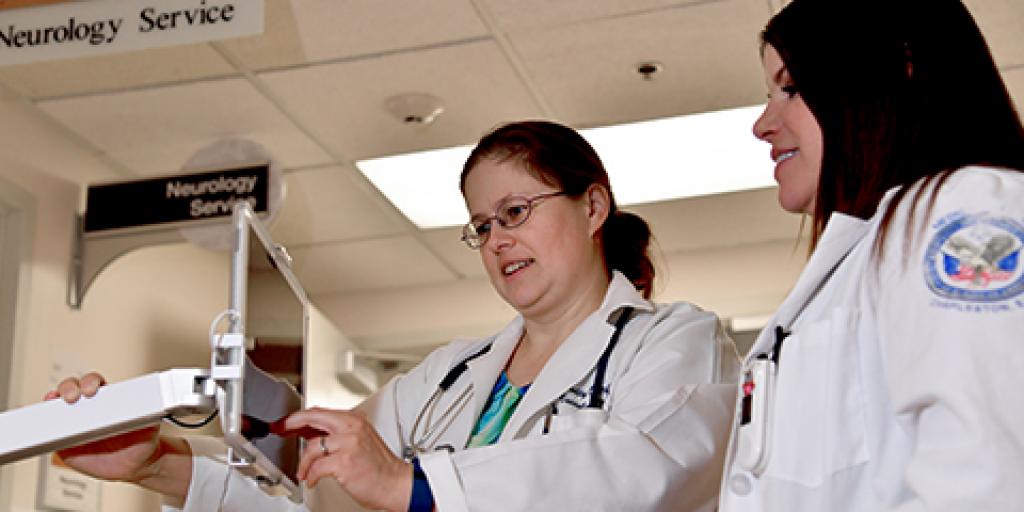Telestroke program coming to Charleston VAMC

The Ralph H. Johnson VA Medical Center will soon be implementing a telestroke program that will provide neurology coverage for patients suspected of experiencing strokes outside of regular operating hours and during an emergency.
Charleston is one of only 19 VA medical centers implementing the program at this time and the second in their VA region, VISN 7.
During a stroke, 1.9 million brain cells die every minute treatment is delayed. During this critical time, every minute counts and the new telestroke program will assist with quick action to provide the best care of Veteran patients.
How does the technology work? It’s as easy as FaceTime!
When a patient presents in the emergency department with stroke symptoms after hours, on the weekend or on a holiday, the VA telestroke neurologist on-call will be phoned by the nurse at the bedside. The neurologist then calls the phone number associated with the facility’s telestroke iPad and can then virtually assess the patient, while having a live conversation via FaceTime.
Prior to the telestroke program, Charleston VAMC was classified as a Limited Hours Stroke Facility (LHSF) and with the implementation of this new program, the medical center will be reclassified as a VHA Primary Stroke Center. Access to care will expand for Veterans by bringing the VA neurologist right to the bedside. As a LHSF, if a Veteran were experiencing a stroke after hours and in an ambulance on the way to Charleston VAMC, that patient would have to be diverted to another medical center for care. One of the major advantages of the telestroke program is that it keeps VA Veteran patients in-house, right where their full medical record is located, improving patient care and the continuity of their care.
“This program is so important for our Veterans, especially here in Charleston since we’re situated in an area referred to as the ‘stroke buckle,’” said Stroke Program Coordinator Elizabeth Aprile. “We are one of three states that have the highest incidence of stroke nationwide.”
In FY18, Charleston VAMC evaluated approximately 190 Veterans for acute stroke. Of those, nearly 110 had suffered a stroke or a Transient Ischemic Attack (TIA). The stroke team expects an increase to these numbers after becoming a Primary Stroke Center since more patients will be evaluated with the full-time coverage.
Charleston VAMC staff across nine areas were trained by national program managers on proper protocol and how to operate the monitors. Charleston VAMC will maintain three monitors for quick, convenient access across the medical center. The monitors will be located in the Emergency Department, Intensive Care Unit and Radiology.
The Telestroke program is funded by the Office of Rural Health and is no cost to the local facility.
